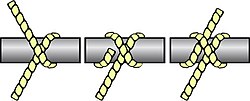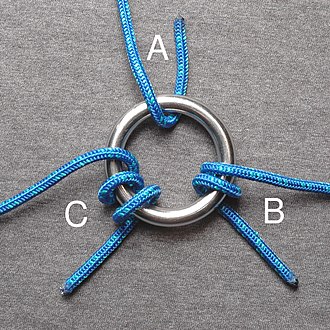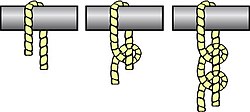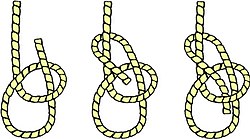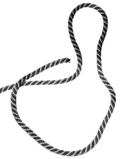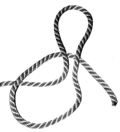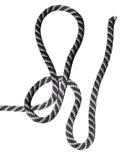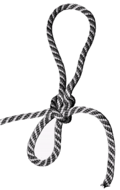Translations:AY Honors/Rowing/Answer Key/41/en
From Pathfinder Wiki
| Clove hitch |
|---|
|
Use: This knot is the "general utility" hitch for when you need a quick, simple method of fastening a rope around a post, spar or stake (like tying wicks to sticks in Candle Making) or another rope (as in Macramé)
How to tie:
|
A turn is a component of a knot. Turns can be made around objects, through rings, or around the standing part of the rope itself. Turns come in various forms, distinguished by the number of passes that the rope makes. A turn or single turn requires one pass. The line makes a U-shape through or around the object, or half a revolution. A round turn requires two passes and makes one and a half revolutions. Two round turns adds another pass and revolution.
| Two half hitches |
|---|
|
Use: This reliable knot is quickly tied and is the hitch most often used in mooring.
How to tie:
|
| Bowline |
|---|
|
Use: This knot doesn't jam or slip when tied properly. It can be tied around a person's waist and used to lift him, because the loop will not tighten under load. In sailing, the bowline is used to tie a halyard to a sail head.
How to tie:
|
| Halter hitch, Hitching tie |
|---|
|
Use: The halter hitch, sometimes called a hitching tie is used to tie the lead rope, which is attached to a horse's halter (or to a boat), to a post or hitching rail. The benefit of the halter hitch is that it can be released by pulling on one end of the rope. Even if there is tension on the horse-side of the rope it can still be release with ease.
How to tie:
|
